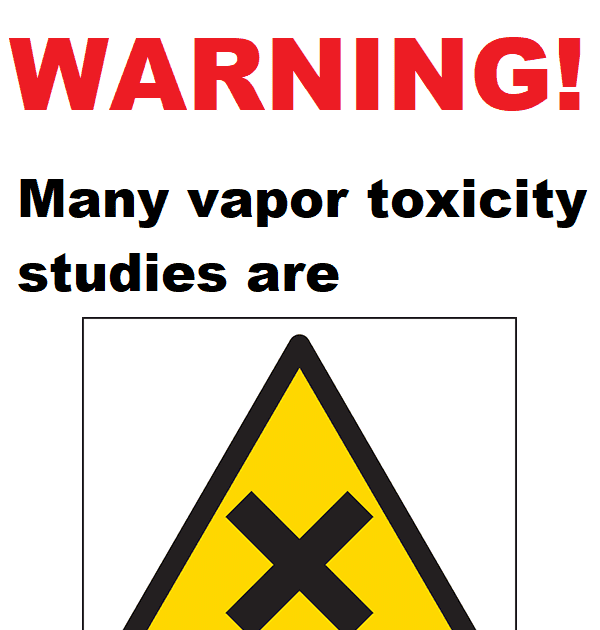
The
easy publication and wide media diffusion of questionable and unreliable
studies is a widespread phenomenon that generates the misperception that
e-cigarette aerosols are much more toxic than the evidence shown by well-designed
and conducted studies.
- Soulet,
S. and Sussman, R.A. Critical Review of Recent Literature on Metal Contents in
E-Cigarette Aerosol. https://www.mdpi.com/2305-6304/10/9/510
Toxics, 10, 510.
- Sussman,
R.A., Sipala, F., Emma, R., and Ronsisvalle, S. Aerosol Emissions from Heated
Tobacco Products: A Review Focusing on Carbonyls, Analytical Methods, and
Experimental Quality. Toxics 2023, 11,
947.
The
reviews provide a critical evaluation of 65 emission studies published between
2018 and 2022 (12 on metals, 36 on organic byproducts and 17 on heated tobacco
products, HTPs). The first 2 reviews concern the presence of metals and organic
byproducts in e-cigarette aerosols.
To
evaluate the 65 reviewed studies, my colleagues and I considered the following 5
conditions of experimental quality: (1) reproducibility and replicability of
experiments; (2) consistency between supplied power, coil resistance, airflow
rate and puffing parameters; (3) tested devices must be in good conditions; (4)
appropriate evaluation of exposure and (5) analytic methods.
We
show in the e-cigarette reviews that all studies reporting high levels of
toxicants (metals or organic in comparison with toxicological markers) exhibit
moderate to severe flaws of experimental design, failing to comply with at
least 3 of the 5 quality conditions, making their toxicity assessments either
questionable or completely unreliable. As a contrast, all studies complying
with (at least) 4 of the 5 quality conditions reported low toxicity levels
(below toxicological markers and way below tobacco smoke). Our HTP review
showed that all except 2 of the studies (9 industry-funded and 8 independent), are
reliable. We also comment and criticize various claims that question the
relative safety of HTP aerosols in reference to tobacco smoke.
We
believe that these reviews completely demolish all claims of alleged high
toxicity of vape aerosols, particularly pronouncements like “contain toxic
compounds,” some of which constitute rhetoric devoid of evidence or in some
cases they are based on studies that we documented are unreliable.
There
are numerous questionable and/or unreliable studies – all funded by the NIH and
other public institutions in the US – that are widely cited in order to
promulgate the sense of a toxic crisis.
Here are some of the worst offenders (citation numbers taken from Google Scholar):
Olmedo,
P., Goessler, W., Tanda, S., Grau-Perez, M., Jarmul, S., Aherrera, A., …
& Rule, A. M. (2018). Metal concentrations in e-cigarette liquid and
aerosol samples: the contribution of metallic coils. Environmental health
perspectives, 126(2), 027010. 329 citations
Bitzer,
Z. T., Goel, R., Reilly, S. M., Elias, R. J., Silakov, A., Foulds, J., …
& Richie Jr, J. P. (2018). Effect of flavoring chemicals on free radical
formation in electronic cigarette aerosols. Free Radical Biology and
Medicine, 120, 72-79. 151 citations
Kim,
S. A., Smith, S., Beauchamp, C., Song, Y., Chiang, M., Giuseppetti, A., …
& Kim, J. J. (2018). Cariogenic potential of sweet flavors in
electronic-cigarette liquids. PloS one, 13(9), e0203717. 109
citations
Zhao,
D., Navas-Acien, A., Ilievski, V., Slavkovich, V., Olmedo, P., Adria-Mora, B.,
… & Hilpert, M. (2019). Metal concentrations in electronic cigarette
aerosol: Effect of open-system and closed-system devices and power settings. Environmental
research, 174, 125-134. 94 citations
Bitzer,
Z. T., Goel, R., Reilly, S. M., Foulds, J., Muscat, J., Elias, R. J., &
Richie Jr, J. P. (2018). Effects of solvent and temperature on free radical
formation in electronic cigarette aerosols. Chemical research in toxicology,
31(1), 4-12. 88 citations
Son,
Y., Mishin, V., Laskin, J. D., Mainelis, G., Wackowski, O. A., Delnevo, C., …
& Meng, Q. (2019). Hydroxyl radicals in e-cigarette vapor and e-vapor
oxidative potentials under different vaping patterns. Chemical research in
toxicology, 32(6), 1087-1095. 67 citations
Son,
Y., Bhattarai, C., Samburova, V., & Khlystov, A. (2020). Carbonyls and
carbon monoxide emissions from electronic cigarettes affected by device type
and use patterns. International journal of environmental research and public
health, 17(8), 2767. 64 citations
Ooi,
B. G., Dutta, D., Kazipeta, K., & Chong, N. S. (2019). Influence of the
e-cigarette emission profile by the ratio of glycerol to propylene glycol in
e-liquid composition. ACS Omega 4 (8): 13338–13348, PMID: 31460462. 62
citations
Korzun,
T., Lazurko, M., Munhenzva, I., Barsanti, K. C., Huang, Y., Jensen, R. P., …
& Strongin, R. M. (2018). E-cigarette airflow rate modulates toxicant
profiles and can lead to concerning levels of solvent consumption. ACS omega,
3(1), 30-36. 60 citations
Tehrani,
M. W., Newmeyer, M. N., Rule, A. M., & Prasse, C. (2021). Characterizing
the chemical landscape in commercial e-cigarette liquids and aerosols by liquid
chromatography–high-resolution mass spectrometry. Chemical research in
toxicology, 34(10), 2216-2226. 57 citations
El-Hellani,
A., Al-Moussawi, S., El-Hage, R., Talih, S., Salman, R., Shihadeh, A., &
Saliba, N. A. (2019). Carbon monoxide and small hydrocarbon emissions from
sub-ohm electronic cigarettes. Chemical research in toxicology, 32(2),
312-317. 48 citations
Fowles,
J., Barreau, T., & Wu, N. (2020). Cancer and non-cancer risk concerns from
metals in electronic cigarette liquids and aerosols. International
journal of environmental research and public health, 17(6),
2146. 47 citations
Williams,
M., Li, J., & Talbot, P. (2019). Effects of model, method of collection,
and topography on chemical elements and metals in the aerosol of tank-style
electronic cigarettes. Scientific Reports, 9(1), 13969.
46 citations
Here
are two studies (one of them cited above) with misleading conclusions that have
been widely cited, while corresponding articles dealing with their deficiencies
have been ignored.
Misleading: Williams, M.,
Villarreal, A., Bozhilov, K., Lin, S., & Talbot, P. (2013). Metal and
silicate particles including nanoparticles are present in electronic cigarette
cartomizer fluid and aerosol. PloS one, 8(3), e57987. 825
citations
Ignored: Farsalinos, K.
E., Voudris, V., & Poulas, K. (2015). Are metals emitted from electronic
cigarettes a reason for health concern? A risk-assessment analysis of currently
available literature. International journal of environmental research and
public health, 12(5), 5215-5232. 118 citations
Misleading: Olmedo P, Goessler
W, Tanda S, et al. Metal Concentrations in e-Cigarette Liquid and Aerosol
Samples: The Contribution of Metallic Coils. Environ Health Perspect. 2018 Feb
21;126(2):027010. doi: 10.1289/EHP2175. PMID: 29467105; PMCID: PMC6066345. 329
citations
Ignored: Farsalinos KE, Rodu
B. Metal emissions from e-cigarettes: a risk assessment analysis of a
recently-published study. Inhal Toxicol. 2018 Jun-Jul;30(7-8):321-326. doi:
10.1080/08958378.2018.1523262. Epub 2018 Nov 2. PMID: 30384783. 15 citations
Another important distinction between the last two articles can be seen
by their Altmetrics Score, which is a measure of how much attention they have
received. The Altmetrics Score of the
Olmedo et al article is 46,891. In contrast, the score of the article by Farsalinos
and Rodu is 139.
Stay
tuned. We have submitted a review of 98 studies
(some widely cited) that have tortured cells/rodents by exposing them to
overheated and carbonyl-loaded aerosols, which evidently renders their assessment
of vaping safety totally unrealistic and unreliable.
The
articles I have highlighted represent just the tip of the anti-tobacco harm
reduction iceberg that is killing smokers all over the world.



